4 Nights / 5 Days

Meals: Lunch or Dinner Cost (approx.): per Meal Usd 4.00 – 7.00
note: Hotel Room Ck –in 2.00 Pm & Ck-out Time At 12:00 Hrs. Hotel Will Calculated Half Day Room Charge for Early Check-in and Late Check-out.
About Sylhet:
sylhet: the Land of Two Leaves and a Bud Immaculately Nestled in the Picturesque Surma Valley Amidst Scenic Tea Plantations and Lush Green Tropical Forests, It is a Prime Attraction for all Tourists. Its Terraced Tea Gardens, Eye-soothing Orange Groves and Pineapple Plantations and Hills Covered with Tropical Forests Form a Beautiful Landscape. The Sylhet Valley Has a Good Number of Haors Which are Big Natural Wetlands. These Haors Which Provide Sanctuary to the Millions of Migratory Birds Who Fly from Siberia Across the Himalayas to Avoid the Severe Cold.
Srimongal: Srimongal in Moulvibazar District Known as the Tea Capital of Bangladesh is the Main Tea Centre of the Area. For Miles and Miles Around the Visitors Can See the Tea Gardens Spread like Green Carpet Over the Plain Land or On the Slopping Hills. Sylhet, the Tea Granary of Bangladesh, Not Only Has Over 150 Tea Gardens. A Stay in One of the Rest-houses of Tea Gardens Would Be An Enchanting One.
Sylhet is also Known as the Land of the Famous Muslim Saint Hazrat Shah Jalal (ra), the Great Torch Bearer of Islam to this Region. The Shrine of this Great Saint is Located At Sylhet Town. Another Shrine of this Town is the Shrine of Hazrat Shah Paran (ra). Colourful Monipuri, Khasia and Garo Tribes Live in Sylhet. Monipuris are Famous for Their Wide Variety of Exquisite Handicrafts of Cane and Bamboo. Sylhet is Linked with Dhaka By Rail, Road and Air.
description of Attractions in Dhaka:
1. National Parliament Building:
parliament House of Bangladesh is One of the Twentieth Century’s Utmost Architectural Structures. This Stunning Building Was Designed By Famous Architect Louis I Kahn. It Was Made of Mostly Concrete and Marble Showing a Rich Blend of Ancient and Modern Architecture. Use of Different Geometrical Shape and Floating Outlook are Some Unique Attractions of this Glorious Creation. There is Not a Single Column in the Whole Building. Hollow Columns that are Parts of Space Enclosures have Been Adapted as Structural Supports. It is More like a Concrete Mass Carefully Carved and Sculptured Into a Superbly Functional Entity. The Construction Material Used is Concrete and Cast Concrete Forms Both Interior and Exterior Surfaces. Use of Light and the Unique Way of Bringing Light to Public Spaces are the Most Distinguishing Element of Kahn’s Design. Light from the Roof Illuminates Different Spaces as if Ambient Glows are Showered from Heaven.
one of the Important Considerations in Designing the National Assembly Building Was Protection from the Sun and Rain, While Admitting Free Circulation of Air Achieved By Providing Huge Geometric Openings At the Outer Fae7ade in the Form of Triangles, Rectangles, Full and Segmented Circles and Flat Arches. The Structure Provides a Visual Impression of a Majestic Edifice. It Avoided Conventional Method of Placing Windows in the Exterior and the Disadvantages of Monumental Composition Were Removed By Provision of Core Walls with Small Gaps in Between. Architecturally, the Complex Marks a Distinct Departure from the Rest of Modern Buildings in Dhaka.
2. Lalbag Fort:
lalbagh Fort (also Known as "fort Aurangabad") is An Incomplete Mughal Palace Fortress At the Buriganga River in the Southwestern Part of Dhaka, Bangladesh. Construction Was Commenced in 1678 By Prince Muhammad Azam During His 15-month Long Vice-royalty of Bengal, But Before the Work Could Complete, He Was Recalled By Aurangzeb. His Successor, Shaista Khan, Did Not Complete the Work, Though He Stayed in Dhaka Up to 1688. His Daughter Bibi Pari (lady Fairy) Died Here in 1684 and this Led Him to Consider the Fort to Be Ominous.
The Fort Was Long Considered to Be a Combination of Three Buildings: the Mosque;the Tomb of Bibi Pari; and the Diwan-i-aam, Comprising Two Gateways and a Portion of the Partly Damaged Fortification Wall.
3. Karjan Hall:
curzon Hall Meant to Be a Town Hall, Was Named After Lord Curzon, the Viceroy of India, Who Laid Its Foundation in 1904. A Year Later Bengal Was Partitioned and Dhaka Became the Capital of the Newly Created Province of East Bengal and Assam. Following the Annulment of Partition in 1911 It Was Used as a Premise of Dhaka College, and After the Establishment of Dhaka University in 1921, Became Part of the University's Science Section and Continues as Such. Laid Out in a Spacious and Carefully Maintained Garden, this Double Storeyed Brick Building Has a Large Central Hall, Lateral Wings On the East and West with Several Rooms, and a Continuous Verandah On all Sides.
one of the Best Examples of Dhaka’s Architecture, It is a Happy Blend of European and Mughal Elements, Particularly Noticeable in the Projecting Facade in the North Which Has Both Horse-shoe and Cusped Arches.
the Style Combined Traditional Art with Modern Technology and Functions and Favoured Mughal Forms such as Arches and Domes, Believed to have Entered the Islamic World from the West. It Marks the Casting Aside of Veiled Power After the Sepoy Revolt of 1857, and India's Passing Directly Under the British Crown, Seeking Legitimacy By Linkage to the Mughals. The Red Colour Substituting for Red Sandstone, and the Ornate Brackets, Deep Eaves, and Domed Terrace Pavilions (chhatris), Specially of the Middle Section are Strikingly Reminiscent of the Small But Well-known Diwan-i-khas in the Palace Fortress of Fatehpur Sikri, Emperor Akbar's Capital Between 1570 and 1585.
4. National Museum:
the Bangladesh National Museum Preserves and Displays the Cultural Property and Heritage, as Well as Specimens of Natural History of Bangladesh. Its Mission is to Establish a Bridge Between the Past and the Present and Uphold the National Tradition and Culture. It is Located At Shahbag, Dhaka. The Museum is Well Organized and Displays have Been Housed in Several Departments like Department of Ethnography and Decorative Art, Department of History and Classical Art, Department of Natural History, and Department of Contemporary and World Civilization[1]. The Museum also Has a Conservation Laboratory. The Museum Was Formally Inaugurated On 20 March 1913.
5. Shahid Mianar:
the Shaheed Minar is a National Monument in Dhaka, Bangladesh, Established to Commemorate Those Killed During the Language Movement Demonstrations of 1952.
On February 21, 1952, Dozens of Students and Political Activists Were Killed When the Pakistani Police Force Opened Fire On Bengali Protesters Who Were Demanding Equal Status to Their Native Tongue, Bangla. The Massacre Occurred Near Dhaka Medical College and Ramna Park in Dhaka. A Makeshift Monument Was Erected On February 23 By Students of University of Dhaka and other Educational Institutions, But Soon Demolished On February 26 By the Pakistani Police Force.
the Language Movement Gained Momentum and After a Long Struggle, Bangla Was Given Equal Status as Urdu. To Commemorate the Dead, the Shaheed Minar Was Designed and Built By Hamidur Rahman, a Bangladeshi Sculptor. The Monument Stood Until the Bangladesh Liberation War in 1971, When It Was Demolished Completely During Operation Searchlight, During Which the Pakistani Army Estimates They Inflicted 26,000 Civilian Deaths, While other Organizations such as National Geographic Estimate Casualties Numbering Over 3 Million. After Bangladesh Gained Independence, It Was Rebuilt.
6. Armenian Church:
the Armenian Community of Dhaka Played a Significant Role in Bengali Trade and Commerce in the 17th and 18th Centuries. In the Early Part of 18th Century, Armenians Settled in Dhaka, Then One of the Commercial Centres in Bengal. They Initially Built a Chapel and Cemetery At Tejgagon, Five Miles from Dhaka. The Oldest Tombstone is “avetis” An Armenian Merchant Who Died On 15 August 1714. After Safavid Rulers Conquered Eastern Armenia in the Caucasus, Shah Abbas Deported About 300,000 Armenian Traders Specialized in Inter-euroasiatic Trade to Isfahan and New Julfa. From There These Traders First Came to Bengal Following the Footsteps of Persian Adventurers, and in the Course Established Their Own Trading Community There, Recognized as such By the Mughal Government Since Late 17th Century.
7. Dhakeshwari Temple:
situated in Dhaka, Bangladesh, the State-owned Dhakeshwari National Temple is a Great Tourist Attraction. The Name Dhakeshwari Eludes to the Temple’s Dedication to the Goddess of Dhaka and Visitors Should Take Care to Show Respect for the Religious Beliefs of Those Who Frequent this Large and Ancient Temple.
it is Widely Seen as Being the Most Important Hindu Place of Worship in the Country and So You Will Often See Devout Hindus Flocking Here for Worship. The 11th Century Temple is also the Oldest Hindu Temple in the City and It is Situated At the Point Where the Most Ancient Ramparts of the City Meet with the New and Vibrant City of Dhaka. No One Really Knows Much About the Origin of this Temple But a Popular Legend Says It Was Built By Ballal Sen in the 12th Century. However Researchers have Found that the Architectural Style is Not Consistent with that Period in History. It is also Nearly Impossible to Get a Clear Idea of Exactly How the Original Temple May have Looked Since It Has Been Repaired, Renovated and Rebuilt Extensively in the Many Years that It Has Been in Existence.
8. Ahsan Manjil:
it Was the Residential Palace of the Nawabs of Dhaka. It Was Called the Rang Mahal of Sheikh Enayetullah, a Landlord of Jamalpur. French Bought It from His Son Matiullah, and Made It Their Trading Centre. Khwaja Alimullah Made It His Residence After Purchasing It from the French. Nawab Abdul Gani Made the Beautiful Palace in 1872 and Named It After His Son Khaja Ahsanullah. It is On a Raised Platform of 1 Metre. The Two-storied Palace Measures 125.4m By 28.75m. There are Doorways On the Ground Floor, Both On the Southern and Northern Sides of the Palace. A Stairway Has Come Down from the Southern Entrance, Expanding Up to the Bank of the River Through the Front Garden. The South and North Verandas of Both the Floors are On Semicircular Arches. The Verandas and Rooms Made Up of Marble. It is Divided Into Two Sections- One is Called "rang Mahal" and Another One is "andar Mahal" On the Western Side. It Has 31 Rooms with 23 Galleries Displaying Portraits, Furniture and Household Belongings of the Nawabs.
9. Star Mosque:
star Mosque is Situated in Abul Khairat Road, Armenitola, in the Old Part of Dhaka City. The Mosque is Not Dated By Any Inscription. It is Known that One Mirza Golam Pir, Whose Ancestors Had Come to Dhaka and Settled in Mohalla Ale Abu Sayeed (present-day Armanitola), Erected It. Mirza Golam Pir Died in 1860, and Hence the Date of Construction of the Mosque May Conveniently Be Placed in the First Half of the 19th Century.
the Mosque, Both Inside and Outside, is Decorated with Mosaic. Small Chips of Chinaware-plate, Cup Etc and Pieces of Glass have Been Used for Mosaic. This Type of Mosaic is Called ‘chini Tikri‘ Work. Vase with Flowers is An Important Decorative Motif On the Spandrel of the Arches and Elsewhere On the Facade. Flower-vases, Flower Branches, Rosset, Crescent, Star, and Arabic Calligraphic Writing have Been Used in the Decoration of the Mosque. The Outer Walls Between the Doors are Decorated with the Motif of Fujisan (mount Fuji) On Glazed Tiles and a Crescent-and-star Design Decorates the Upper Part of the Facade. Hundreds of Blue Stars have Been Created On the Domes of White Marble. All Over the Mosque the Motif of Stars Dominate the Decoration and So the Mosque is Called the Star Mosque (tara Masjid).
10. National Martyrs Memorial:
jatiyo Sriti Soudho or National Martyrs' Memorial is a Monument in Bangladesh. It is the Symbol of the Valour and the Sacrifice of Those Killed in the Bangladesh Liberation War of 1971,
which Brought the Independence of Bangladesh from Pakistani Rule. The Monument is Located in Savar, About 35km North-west of the Capital, Dhaka. It Was Designed By Syed Mainul Hossain.
the Monument is Composed of 7 Isosceles Triangular Pyramid Shaped Structures, with the Middle One Being the Tallest. The Highest Point of the Monument is 150 Feet. There is An Artificial Lake, and Several Mass Graves in Front of the Main Monument. National Martyrs' Memorial Situated At Savar, About 35 Km North-west of Dhaka, Symbolises the Valour and Sacrifice of the Martyrs Who Sacrificed Their Lives for the Liberation of Bangladesh.
the Highest Point of the Structure Reaches 150 Feet. This Unique Arrangement of the Planes Has Created a Structure that Seems to Change Its Configuration When Viewed from Different Angles. The Architect Has Used Concrete for the Monument While all the other Structures and Pavements of the Complex are Made of Red Bricks. Use of Different Materials Has Added to the Gravity of the Monument.
the Whole Complex is Spread Over An Area of 34 Hectares (84 Acres) Which is Again Wrapped Around By a Green Belt of 10 Hectares (24.7 Acre). Several Mass-graves and a Reflection Water Body are Placed in Front of the Monument. Once One Enters the Complex Through the Main Gate He or She Can See the Monument Axially But to Reach It One Has to Walk Through Different Ups and Downs of Pavements and Cross An Artificial Lake By a Bridge-all These Represent the Struggle for Independence.
Tribal and Cultural Tour
dhakacity and Sylhet City
avg/night
280 Usd Book
why Book with Us?
135,00+ Hotels
Nunc Cursus Libero Pur Congue Arut Nimspnty.
Low Rates & Savings
Nunc Cursus Libero Pur Congue Arut Nimspnty.
Excellent Support
Nunc Cursus Libero Pur Congue Arut Nimspnty.
After arrival Check in hotel evening free time and night stay Hotel in Dhaka.
Leave Dhaka By Ac Ticket Coach/train for Sylhet. the Distance is Around 341 Km. Transfer to the Hotel. Itinerary May Change if Highway Traffic.
you Will Visit the Tamabil (dawki India Border) and Jafflong Water Fall as per Time Permit- Where There is a Beautiful River Flowing from India to Bangladesh. Watch the Stone Collection Activities and have a Look the Life Style of Local Khasia Tribes.
After Breakfast Start Journey to Visit Madhabkunda Natural Waterfall. Enjoy the Lunch At the Parjatan Restaurant Near By the Waterfall. After Lunch Start Journey for Srimongal. Over Night At Srimongal or Sylhet City.
After Early Breakfast Visit Checkout Hotel and Back to Dhaka. Evening City Tour in Dhaka if Time.
Morning Check Out Hotel and Start City Tour for Curzon Hall of Dhaka University, Central Shahid Minar, National Museum, Dhakeshori Mondir, National Perliament Bhaban, Etc. as per Time Permit upto Final Departure from Dhaka.
| No of pax | Age Limit | Price per pax (Rs) |
|---|---|---|
| Adult | Above 12 years | $ 280 / Adult |
| Accommodation | 2 Pax | 4-8 Pax | 10-18 Pax |
| Budget | USD 300.00/pax | USD 280.00/Pax | USD 240.00/Pax |
| AC Standard | USD 360.00/pax | USD 300.00/pax | USD 260.00/pax |
| 3 star category | USD 410.00/pax | USD 365.00/pax | USD 310.00/pax |
We Deals Airline Ticketing, Car & Coach Rental, Domestic & International Tour Operation, Hotel Booking & Reservation, Railway Ticketing, guide Service,Event management, DMC,etc. Read More...

 6D/5N
6D/5N
 6D/5N
6D/5N
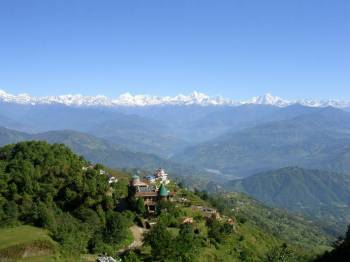 4D/3N
4D/3N
 4D/3N
4D/3N
 4D/3N
4D/3N
 7D/6N
7D/6N
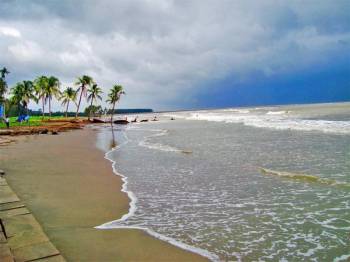 8D/7N
8D/7N
Bangladesh Tour- Sea- Hill -tribal Life ..
Dhaka - Cumilla - Bandarban - Rangamati
 3D/2N
3D/2N
 3D/2N
3D/2N
Sundarban Forest and Tiger Den Tour
Khulna - Kotka - Kochikhali - Chandpai - Karomjol - Sundarban
 5D/4N
5D/4N
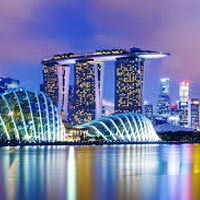 5D/4N
5D/4N
 5D/4N
5D/4N
 5D/4N
5D/4N
 5D/4N
5D/4N
 5D/4N
5D/4N
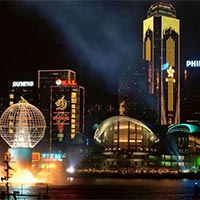 5D/4N
5D/4N
 5D/4N
5D/4N
 5D/4N
5D/4N
 4D/3N
4D/3N
 6D/5N
6D/5N
 7D/6N
7D/6N
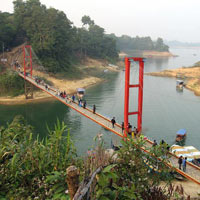 8D/7N
8D/7N
 7D/6N
7D/6N
Haridwar - Joshimath - Dhaka - Mongla - Tokyo - Athens - Mykonos
 6D/5N
6D/5N
 1D/0N
1D/0N
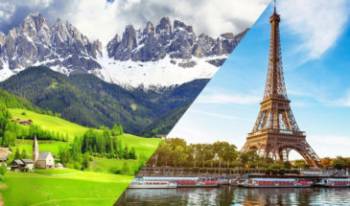 9D/8N
9D/8N
Lucerne - Interlaken - Zanzibar - Islamabad - Besham Qila - Dhaka - Mongla